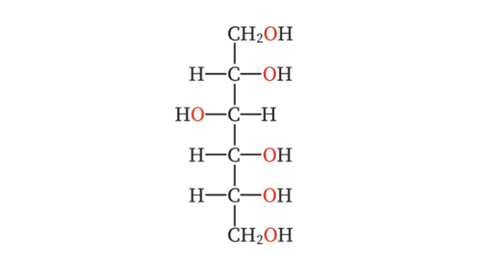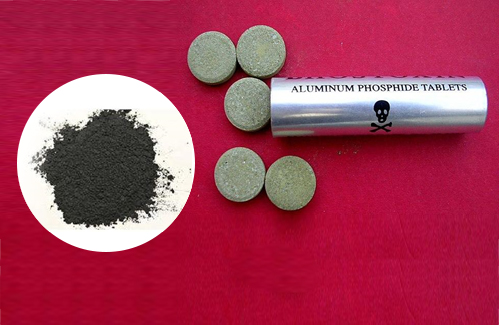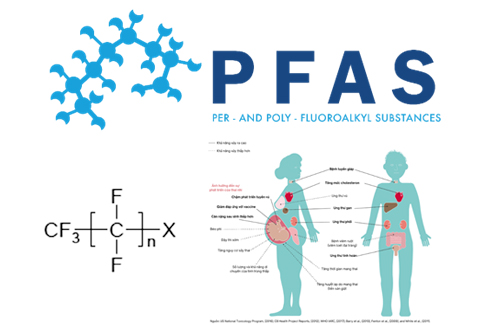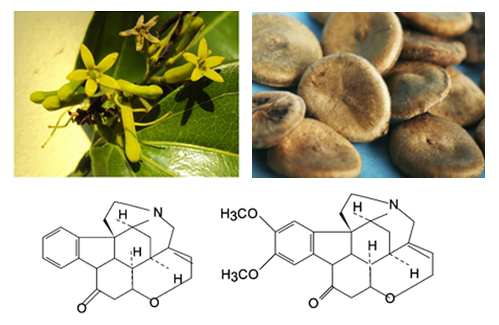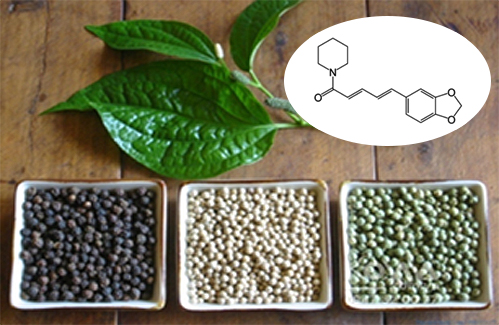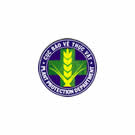- Folder Technical News
- Views 3337
- Last Updated 26/05/2022
Food preservatives help maintain the freshness and shelf life of food products, which would otherwise quickly deteriorate due to exposure to air, moisture, bacteria or mold. However, improper use or abuse of preservatives will affect human health.
1. Concept
Preservatives are natural or synthetic chemicals, added to food to prevent or delay putrefaction or spoilage caused by microbial growth or undesirable chemical changes in food products.
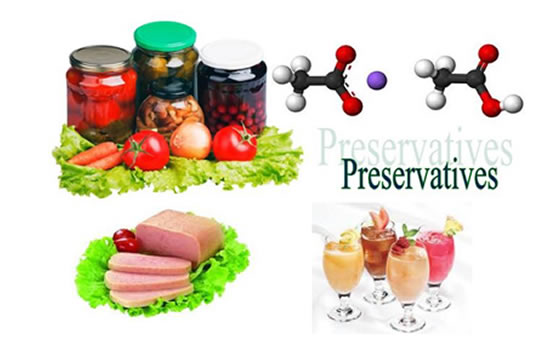
2. Classification of preservatives
Preservatives include conventional (natural) preservatives, synthetic preservatives, and bacteriocins
- Common conventional preservatives (natural preservatives) are sugar, salt, vinegar, and alcohol..., which have the effect of inhibiting and killing microorganisms. These preservatives do not change the quality of food, maintain the color and quality of the original food products, so they are still commonly used.

- Synthetic preservatives, that prevent or slow down the growth of microorganisms, involved two types: inorganic preservatives and organic preservatives.
+ Inorganic preservatives: Nitrates, nitrites, sulfites, sulfurous acid, borates, hypochlorite, and peroxide.
+ Organic preservatives: benzoic acid, sorbic acid, acetic acid, propionic acid, citric acid, lactic acid, formic acid,…or their salts – as well as esters of p-hydroxybenzoic acid (paraben)
- Bacteriocins are antibacterial agents, being the nature of peptides synthesized at ribosomes of both Gram-negative and Gram-positive bacteria to inhibit other competitive Gram-positive bacteria. Because of their protein origin, bacteriocins do not cause side effects or allergic reactions in the human body, so they are often recommended for preservation.
Today, about 200 chemicals of bacteriocins have been identified, however, their classification remains unclear and controversial. Currently, bacteriocins are divided into 3 classes:
- Class I: Lantibiotics are small peptides with molecular weight < 5 kDa with a structure of 19-37 amino acids, thermostable, acting following cell membrane structures. They include nisin, lactocin S, Lacticin 3147, subtilin...
- Class II: Non-Lantibiotics are small molecular weight from 5kDa to 15 kDa, thermostable, including several types: pediocin PA-1, Leucocin A –UAL 187, and Lactococcin G…
- Class III: including peptides with a large molecular weight over 30 kDa, thermos-unstable proteins, including some types: caseicin 80, lacticin A, and B...
Among used bacteriocins, Nisin is a commonly used preservative in many countries around the world. There are about 6 types of Nisin that have been discovered, denoted from A to E and Z. Up to now, 4 types of Nisin have been discovered. The characteristics studied are Nisin A, Z, Q, and Nisin U.
3. Effect of preservatives on human health
Preservatives are considered as a food additive to ensure the stable food for consumers in appropriate amounts according to the provisions of Circular No. 24/2019-TT/ BYT - of the Vietnam ministry of Health (24_2019_tt-byt_360857.pdf)– Regulations on management and use of food additives
Preservatives with inappropriate level or without the permitted list can affect harmfully to consumers' health. For example:
- Benzoic acid and its salts have antiseptic and fungicidal effects. If food products contain benzoic acid or benzoate salts and ascorbic acid, they are possible to form benzene – a chemical classified by the International Organization for Research on Cancer (IARC) into group 1: a group of human carcinogens. Besides, this substance can cause acute poison with a symptom such as allergies, asthma attacks, rashes, low blood pressure, diarrhea, stomachache... The FAO/WHO acceptable daily intake of benzoic acid and its salts is 0-5 mg/kg of body weight.
- Sorbic acid and its salts have a strong antiseptic effect against yeasts and molds, potentially causing some side effects such as allergies, bloating, flatulence, and indigestion. This group of substances, when they had been accumulated for a long time, can damage the liver and kidney. The FAO/WHO acceptable daily intake of sorbic acid and its salts is 25 mg/kg of body weight.
- Nitrate and nitrite have the effect of keeping the meat's natural red color, inhibiting bacteria, but they reduce hemoglobin and increase methemoglobin in the blood, which can cause vasoconstriction, increase blood pressure, and form nitrosamines, which are potentially carcinogenic. The FAO/WHO acceptable daily intake (ADI) for nitrites at 0-0.2 mg/kg/day and nitrates at 0-5 mg/kg/day.
- SO2 and sulfite salts (sodium sulfite, sodium hydrogen sulfite, sodium metabisulfite, potassium metabisulfite, and calcium sulfite) containing about 52–68% active SO2 are antimicrobial and moldy used to preserve some products such as wine, dried fruit, dried bamboo shoots, juice, meat, and meat products... The use of SO2 and sulfite salt for food preservation can cause some side effects such as allergy, bronchial asthma… The FAO/WHO acceptable daily intake (ADI) for sulfite at 0-0.7 mg/kg/day
- Formaldehyde has the effect of killing bacteria. If people those intake foods containing this preservative, they can be undergone DNA mutable, leading to a congenital disorder. When formaldehyde was consumed in a small amount, it can irritate the skin and mucous membranes. LD50 of formaldehyde is 500 mg/kg.
4. How to use food preservatives?
To use preservatives properly, manufacturers should note:
- Use preservatives in the list and with the content within the allowable range according to regulations of the Ministry of Health.
- When using a combination of different preservatives at the same time, manufacturers need to be careful, and careful about the substances used because chemical reactions between them may lead to unhealthy products.
Depend on each specific food products and group of preservatives, the acceptable limits are regulated. The maximum limits (ML) for some groups shown in Table 1.
Table 1: The maximum limits for some preservatives groups
|
Group |
Name of preservatives |
ML (mg/kg) (*) |
|
Sorbates |
Sorbic acid; Sodium sorbate Potassium sorbate; Calcium sorbate |
100 - 3000 |
|
Benzoates |
Benzoic acid; Sodium benzoate Potassium benzoate; Calcium benzoate |
100 - 3000 |
|
Nitrate |
sodium nitrate |
200 |
|
Nitrites |
Potassium nitrite; Sodium nitrite |
80 |
|
Sulfites |
Sulfur dioxide, sodium sulfite, sodium hydrogen sulfite, sodium metabisulfite, potassium metabisulfite, potassium sulfite, sodium thiosulfate |
15 - 1000 |
(*): depending on food types/food groups
5. Controlling the content of preservatives in food
To control the quality of food products, manufacturers, regulatory agencies and other interested parties shall select a qualified laboratory that provides testing for the preservative content in food. The National Institute for Food Control is equipped with many instruments suitable for testing a number of groups of preservatives, including nitrate, nitrite, sulfite, sulfurous, phosphate, hydrogen peroxide, benzoic acid, sorbic acid, acetic acid, propionic, formic, lactic, ... and corresponding salts, parabens, formaldehyde, sodium dihydrogen acetate, Nisin A to Z, ... timely, accurate results, is a reliable destination for testing and controlling the quality of food safety before, during and after distribution of products on the market.
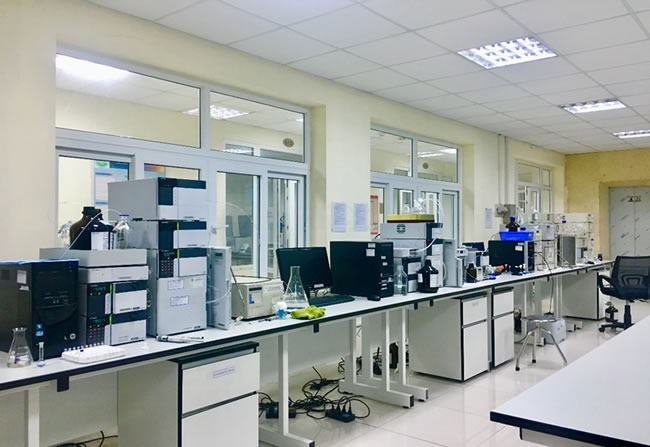
HPLC systems at NIFC for analyzing preservatives in food
References:
- Circular No. 24/2019-TT/ BYT - of the Vietnam ministry of Health (24_2019_tt-byt_360857.pdf)– Regulations on management and use of food additives.
- Del Olmo, A., Calzada, J., & Nuñez, M. (2015). Benzoic acid and its derivatives as naturally occurring compounds in foods and as additives: Uses, exposure, and controversy. Critical Reviews in Food Science and Nutrition, 57(14), 3084–3103.
- Stratford, M., Vallières, C., Geoghegan, I. A., Archer, D. B., & Avery, S. V. (2020). The Preservative Sorbic Acid Targets Respiration, Explaining the Resistance of Fermentative Spoilage Yeast Species. Sphere, 5(3).





